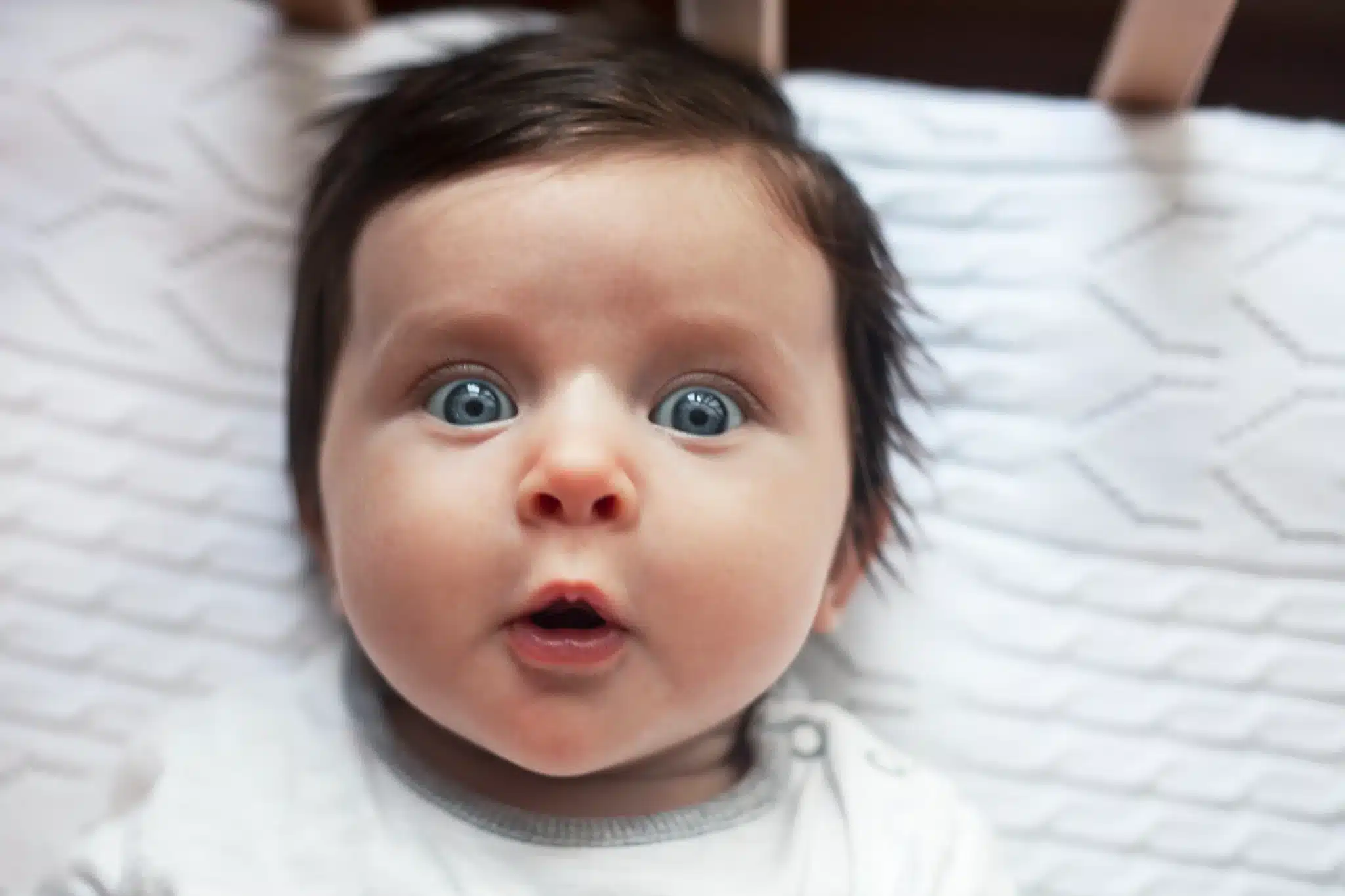Parents are always curious to know their newborn baby’s characteristics. One such most noticeable feature is the newborn eye color.
And clear the general misconception that it isn’t limited to black and brown. Additionally, many people believe that eye color is decided alone by genetics.
For those curious to predict their newborn’s eye color, our detailed guide on newborn eye color predictor can offer fascinating insights based on authentic scientific research.
However, the main queries that come along have kept several of the parents pondering.
Do environmental factors play a role? What about pregnancy health conditions? Does it influence the eye colors of newborns?
Follow along while we explore the underlying science behind eye color development and the factors that affect it.
By the end, you’ll better understand what decides the eye color and how you can know what your baby’s eye color will be.
Factors Affecting Newborn Eye Colour
Primarily, newborn eye color is affected by three factors: genetics, environmental factors, and the health of the mother during pregnancy.
The listed points will enlighten you on how these factors influence newborn eye color.
Genetics
The genes inherited from parents play a key role in determining the eye color of the newborn. Here is how it mostly works:
- If both parents have brown eyes, the baby is more likely to have brown eyes.
- If one parent says a mother or father has blue eyes and the other has brown eyes, the baby is more likely to have a blend of both, like hazel.
Environmental Factors
Exposure to sunlight during pregnancy influences newborn eye color, often leading to darker eye color.
Melanin Levels
The amount of melanin in the eyes has a key role. The higher the melanin level, the darker the color of the eye, while lower levels lead to lighter colors.
Pregnant Mother’s Health
The mother’s health during pregnancy affects the newborn eye color because it is proportional to melanin production.
A balanced and nutritious diet can contribute to proper melanin production and, hence, a darker eye colour.
Types of Eye Colours
Newborns boast of a range of eye colours, a combination of genetic and environmental factors.
The National Institute of Health conducted an analysis based on 192 infants. Here is what they have found:
- 63% of infants were born with brown eyes
- 20.8% showcased blue hues
- 5.7% displayed green or hazel eyes
- 0.5% were unique with partially heterochromatic eyes.
The analysis further states that initial eye color aligns with the infant’s skin tone.
White babies are born with blue or grey eyes, while black or Asian infants frequently possess brown or black eyes.
How Do Newborns Get Their Eye Color?
Primarily, newborn eye color is determined by the amount of melanin, a pigment in the eye.
It’s the same pigment responsible for hair and skin color. There are specialized cells in the body called melanocytes that secrete melanin.
If these cells secrete only a certain amount of melanin, the baby’s eye color is more likely to be blue.
With the increase in melanin secretion, the eye color turns green or hazel. If this increases significantly, it results in brown eyes, the most common eye color.
The most notable part is that melanin production continues for about a year.
Therefore, your baby may be born with a different eye color and, after a certain period, may have a different one. The most identifiable changes occur in the first 6 months of life.
How Does Eye Color Change Over Time?
How the eye color will change over time depends on the pigmentation of the iris, the colored part of the eye.
Genes influence human eye color, with brown, blue, and grey being the common outcomes.
There is a general statement that the newborn will have a mixture of parental eye color.
It’s true but incomplete. Each parent has two gene pairs per chromosome, meaning eye color has multiple possibilities.
Additionally, newborns can have different eye colors than their parents, but darker colors like brown dominate lighter ones.
Moreover, some conditions impact eye color. For eg: Heterochromia, where irises differ in color, results from trauma, genetic disorders, inflammation, or freckles.
Conclusion
Generally, newborns are born with eye color, a mixture of both mom and dad.
A newborn has two copies of every gene, from the mother and father, which are sometimes dominant or recessive.
If it’s dominant, the newborn gets an eye color, a mixture of both the parents, and when recessive, the color contrasts from one or both mother and father (as the case is).
Moreover, it’s possible that newborn eye color changes after birth. However, this happens only up to 9 months after birth.
Hope the article helps! For any queries, comment down below, and we’ll ensure a prompt response.
Frequently Asked Questions
When Does A Newborn’s Eye Color Cease to Change?
When a baby is born, melanin develops, changing the eyes to green, hazel, or brown, depending on how much melanin production is. Knowing when the eye color will stop changing may vary, but it is generally between 6-9 months after birth.
Which Parent Contributes More to Newborn Eye Color?
There is no such case where both parents mutually contribute to the newborn’s eye color. In other words, a newborn’s eye color is a combination of both mother and father. Scientific reason – every child has two copies of genes; first from the mother and the other from the father.
Is It Possible to Change My Newborn Eye Color?
What eye color a newborn will have depends on genetic play. Even if the mother and father both have grey eyes, their child may be born with brown or blue ones. Genes are passed in this case, too, but are recessive.












